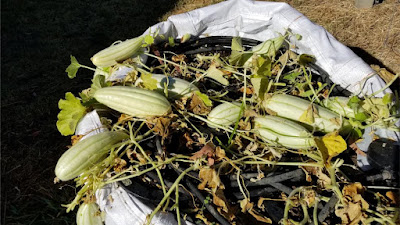Friday, January 5, 2024
The Palestinian Faqous or Fakkous
Friday, December 29, 2023
Greenhouse Ogurdynya Tohum Russian Cucumbermelon in the Spring
Eventually the seed
packets arrived, and I grew it once in 2022. And it was a good thing
that I did. The initial seed that I received hardly germinated in the
spring of 2023. So I sowed my seed fresh seed early in 2023 and watched
the plants grow.
Just as I had noticed
previously, the vines were somewhat spiky – much like a Cucumis sativus.
However, unlike the C. sativus, the flowers were much more like a
Cucumis melo in that the flowers were much more fuzzy than spiky. While I
am not specifically sure what variety it is, I believe that it is
either an Asian pickling melon (C. melo var conomon) or a snapmelon (C.
melo var momordica).
This “Russian
cucumbermelon” is somewhat fun to grow in that the vines are very weedy and tend to sprawl from the center.
Each plant has thin-stemmed vines that frequently branch off from the
primary stem with their own side stems.
The light fruit with
mottled bands has a somewhat hard crunchy outer layer and a more tender
slightly sweet inner flesh when young. As they mature they possess a
sweet crisp outer layer with a softer sweet juicy center. The mature
fruit eventually end up splitting open as they mature – much more like a
snapmelon than an Asian pickling melon.
All-in-all I really enjoyed growing the Ogurdynya Tohum Russian Cucumbermelon. They are simple, easy and somewhat tasty. As a whole, they are a lot of fun to grow in a small space, such as a greenhouse.















































































